Venezuelan Masters: Oswaldo Vigas
De la Serie “Pájaros de la Paz”
17.7 x 13.8 in (print); 21.7 x 16.9 in (overall).
2006.
Certificate of authenticity by the Oswaldo Vigas Foundation.
Edition of 90.
Date on the lower-left corner; signature on the lower-right corner.
Provenance: acquired directly from the artist.
Oswaldo Vigas
Oswaldo Vigas (Valencia, Carabobo, August 4, 1926 - Caracas, April 22, 2014) was a Venezuelan painter and muralist. His work, which was made between France and Venezuela, is an original synthesis between the cultural roots of the Latin American continent and the plastic currents of modernity. He studied Medicine at ULA, Mérida and finished his career at the Central University of Venezuela in Caracas. His work includes painting, sculpture, engraving, ceramics and upholstery. He has made more than a hundred individual exhibitions and is represented in numerous institutions and public and private collections around the world.
Worth mentioning, among his many awards, is the National Award of Plastic Arts of Venezuela, the John Boulton Prize, the Arturo Michelena Prize (received twice), the Award of the Gulf Caribbean Art Exhibition of the Museum of Houston, Texas, and the Grand Prize of Contemporary Art of Monte Carlo; he has been honored with the Orders Francisco de Miranda and Andrés Bello in his home country. The University of the Andes and the Northeastern University Gran Mariscal de Ayacucho conferred the title of Doctor Honoris Causa and the Latin Union, the Latinity Award. In France he was Commander of Arts and Letters; He was honored with the Médaille Vermeil de la Ville in Paris, while in Spain he was a Member of Merit of the Carlos III Foundation.
Currently, the Foundation that bears his name follows the work undertaken by him before his death, a traveling retrospective in Latin America that began in October 2014, at the Museum of Contemporary Art in Lima, Peru, and will be exhibited later in Santiago de Chile, Bogotá and other important cities of the continent.
BIOGRAPHY
Son of Dr. José de Jesús Vigas and Nieves Linares, descendant of Arturo Michelena. He was 10 years old when his father died and Vigas lived between Valencia and Tinaquillo. In 1941 he moved to Guacara, where he made his first paintings. His first known important work is the illustration of the Book of Poetry (1941) at the Ateneo de Valencia. In the same Ateneo in 1943 he was awarded the Medal of Honor for his work Red Leaves, crafting a style that makes himself renowned.
In 1945 Oswaldo Vigas entered the ULA University of Merida to study medicine. In 1946 he presented "Oswaldo Vigas" at the Ateneo de Valencia. His painting continues to be motivated by the human form, with an increasing deformation, greater freedom and thickening of the trace in reinforcement of the general expressivity of the work. In 1947 he participated in the V Salon Arturo Michelena, at the Ateneo de Valencia. In 1949 he moved to Caracas and completed his medical studies at the UCV, although he never got to practice as a doctor. He frequented the Free Art Workshop and actively participates in the artistic movement of the time, and periodically visits the Cristóbal Rojas School of Plastic Arts where he interacts with Manuel Cabré, Martín Durban, Pedro Ángel González, Rafael Ramón González and Rafael Monasterios, among others. In addition, in the same year, he obtains the First Prize of the First Painting Salon at the Mérida Athenaeum. The human figure continues to be the central theme of his painting, increasingly removed from conventional techniques. The stroke becomes more aggressive, start using flat colors, lacing them; he goes on to focus on pre-Columbian pottery. All this marks the preamble to "The Witches Period". In 1952 he obtained the Arturo Michelena Prize, at the Ateneo de Valencia and the National Prize for Plastic Arts, which is worth a job board with which he moved to Paris. In Paris he took a course in History of Art at the Sorbonne. In 1957 he returned to Venezuela and returned to Paris in 1959, as cultural attaché of the Venezuelan Embassy in France. In 1962 he participated in the Venice Biennial in representation of the country. During this period he ventured into materialistic informalism and made a series of etchings using the sugar water technique. In 1964 he returned to Venezuela and UC published a monograph on the artist written by the Norwegian critic Karl K. Ringström. That year he received again the Arturo Michelena Prize with a work of informalist tendency, Parameras. His informalist experience enriches his reencounter with figuration and in the mid-sixties and takes up the essential forms of his witches in a series of "Personagrestes", executed with violent brushstrokes and material charge, briefly interrupted at the end of the decade by a return to the abstraction. In 1965 he was appointed director of culture of the ULA and together with Juan Astorga he worked on the creation of the Mamja.
From 1970 onwards he settled in Caracas and resumed his work in the María Lionza and Señoras series. He was appointed director of the Art Division of the Inciba in 1971. At the beginning of 1972, he traveled to the United States and dedicated himself to developing a set of screenprints. Upon his return, in this same year, he resigned his position as a sign of protest for the censorship imposed by the State in the 1st Drawing and Drawing Room at the Fine Arts Center of Maracaibo, whose completion had to be suspended. From 1974 to 1975 he is part of the Preparatory and Organizing Committee of the Conac. In 1976 he was appointed member of the Advisory Board of the MBA and of the GAN, which began to operate in May of this year under the direction of Manuel Espinoza. In 1978 he is part of the organizing committee of the I Ibero-American Meeting of Art Critics and Plastic Artists. In 1979, the GAN made an anthological sample of his work made between 1943 and 1977. In 1981 he joined the Proposition 20 group, and exhibited in the MBA tapestries designed by him and executed in the workshops of St. Cyr (France). Already in 1971, the artist had carried out works of this type in workshops in Portugal and France, which continues later with tapestries woven by artisans from Toluca (Mexico) and later with a group made in Spain. At the same time, he executed numerous pieces in ceramic: reliefs in refractory plates and stoneware, molds for plates, oxides to paraffin under cover, etc. "In the ceramics of Oswaldo reappear not a few of the fantastic beings that occupy all the space of his paintings, tapestries and graphics, but now reduced to the dimension of a talisman" (Pineda, 1981).
He oversees the execution of a relief-mural in stoneware commissioned by the Ateneo de Caracas and in 1983 he makes gouaches and graphics, inspired by Simón Bolívar. In 1985 he presented his first sculptures in bronze, a consequence of the experiences in ceramics of the early eighties. In 1986 he worked on the theme of the crucifixion (from sketches going back to the fifties), peace, mother, child and birds. The space in the work of Beams begins to be populated with signs and non-figurative forms, from irregular planes that are oriented towards geometric compositions increasingly linear but of a gestural character. "Rectangles and squares are intercepted by pronounced bars reminiscent of Hartung, even because of the monochromatic aspect of these compositions, since Vigas reaches the fullness of this period with resolved fabrics based on black and white, with a graphic suggestion. Having here a suggestive climate, a degraded atmosphere that moves these works away from the purely planistic conception, typical of geometric abstractionism "Carlos Raúl Villanueva commissioned him several mosaic murals for the Ciudad Universitaria de Caracas that the artist made in Paris.
In 1990 the MACCSI organized a retrospective with more than 200 works including paintings, sculptures, tapestries, ceramics, jewelery and crafts. On the occasion of this exhibition, the company Lagoven produces for its series Cuadernos the short film dedicated to the life and work of the artist, Oswaldo Vigas: Renovation At The Origin. That same year he is invited to Montreal (Canada) and participates in the exhibition "Latinartca 63: masters of contemporary Latin American art". In 1990 a new book is published on the work of Oswaldo Vigas, with texts by the French critic Gastón Diehl. In 1992 he traveled to Monaco and participated in the XXVI International Contemporary Art Prize, where he received the first prize with Crucifixion VII. In 1993, at the hôtel des Monnaies in Paris, he organized the exhibition "Vigas from 1952 to 1993", which brings together around 137 creations including paintings, gouache, sculptures, ceramics and drawings. In 1995 he exhibited in "Tapicerías de hoy sobre paredes de antaño" (France and Tokyo), a tapestry made on the occasion of the Pan-American Games of Caracas (1982). In 1996, the exhibition "Oswaldo Vigas: un hombre americano" is presented at the Casa de las Américas in Havana on the occasion of the third anniversary of Casa Simón Bolívar. In 1999 he was honored in the seventh edition of FIA. In his last stage his paintings tend to simplicity, with some touches of color and large areas of untouched fabric. From his work, the GAN has in his collection a significant number of works dated between 1957 and 1987.
He died at age 88 due to pneumonia, after entering without serious symptoms in a hospital in Caracas.
His son, the filmmaker Lorenzo Vigas (Mérida, 1967) became the winner of the Golden Lion at the LXII Mostra de Venecia 2015 for his debut feature Desde Allá.
AWARDS
1942: Prize for best illustration, I Exhibition Hall of Illustrated Poems, Ateneo de Valencia, Carabobo
1943: Ateneo de Valencia Prize, I Arturo Michelena Salon
1949: First prize, I Salon of Painting, Ateneo de Mérida
1950: Lastenia Tello de Michelena Prize, VIII Arturo Michelena Hall
1952: Official Prize of Plastic Arts, XIII Official Hall / John Boulton Prize, XIII Official Hall / Arturo Michelena Prize, X Arturo Michelena Hall
1955: Shell Company of Venezuela Award, "International Painting Exhibition", Ateneo de Valencia, Carabobo
1956: Second Prize, III Salón D'Empaire / Acquisition Award, Gulf Caribbean Art Exhibition, Houston Museum, Texas
1958: Puebla de Bolívar Prize, XIX Official Salon
1959: Acquisition Prize, Exhibition of Contemporary Latin American Art, Palace of the Inquisition, Cartagena, Colombia
1964: Arturo Michelena Award, XXII Arturo Michelena Room
1973: First mention, I Biennial of Latin American Art, Museum of Modern Art of Sogamoso, Colombia
1992: Grand Prix S.A.S Le Prince Reinier III, XXVI International Contemporary Art Prize, Principality of Monte Carlo, Monaco
Available Artworks
Can’t find what you’re looking for?
We have access to a wide range of art collections to meet your requirements, ranging from Venezuelan & Latin American to international masters.
Contact us at +1 305 907-9960 regarding the artist you’re looking for; we’ll search and find it for you.
Starting your art collection
When starting a collection one must consider a variety of factors. First however, one must start by asking – why and how will I start to collect art?


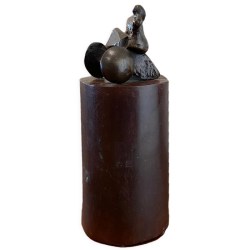
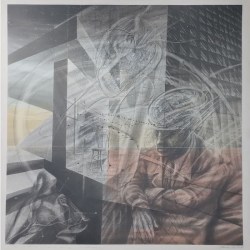
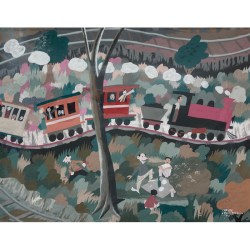
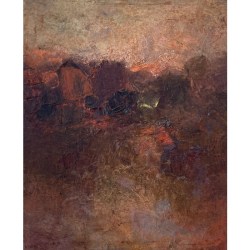


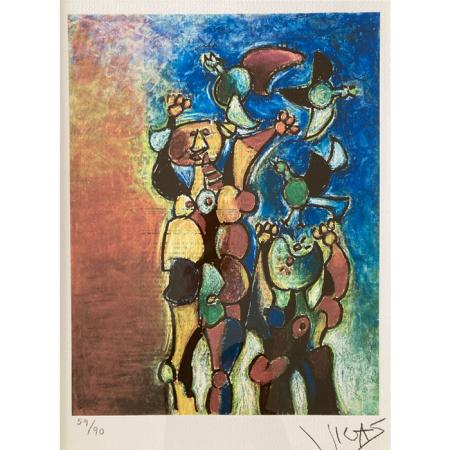




 S/T (Untitled)
S/T (Untitled) S/T (Untitled)
S/T (Untitled) Composición con Tres Personajes
Composición con Tres Personajes